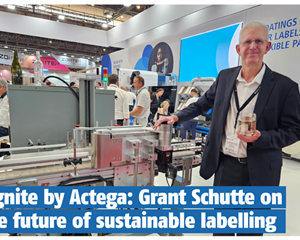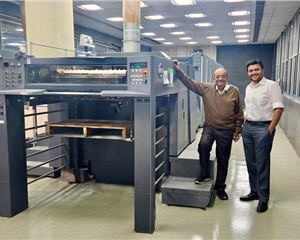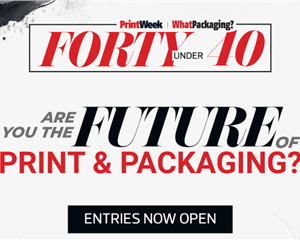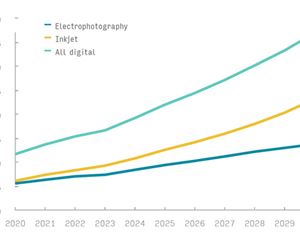A tale of JB Khanna Prints’ strategic resilience
After splitting from its parent company, JB Khanna Prints is rebuilding its poster legacy in Tamil Nadu’s competitive digital print market. Led by Sanjay Khanna and his sons, the new venture blends old-school expertise with a fresh outlook and an eye on packaging and retail.
22 Aug 2025 | By Noel D'Cunha
In the narrow corridors of a modest Chennai office, Sanjay Khanna’s son, Harsh, recounts how JB Khanna Prints came to life in less than 90 days. “We built walls, moved machines, and started afresh,” he says. The company was incorporated in June 2024, and by April 2025, it had fired up a Ricoh C7500 press and entered the market with a clean slate.
It was not just a launch. It was a reboot of the legacy. Khanna, once part of JB Khanna Pictures, now leads the new entity with his sons, Harsh and Hiren.
The old family business had roots dating back to 1987 and deeper still to the original JB Khanna and Company in 1953. After a separation from the Pictures unit, the new firm began reclaiming its space in Chennai’s active print economy.
At the core of this reboot is poster printing. A Ricoh press runs high-volume orders from wholesalers. A Komori offset machine waits in storage, earmarked for a new factory in Madhavaram. The offset press stayed back for now but will move when the Madhavaram site is ready. Plans are also afoot to enter retail. The showroom in Egmore, Chennai, opened in April 2025, hints at a shift in direction as much as it confirms continuity.
Rebuilding from the inside out
The story of JB Khanna Prints is one of separation without rupture. In 2024, Khanna exited JB Khanna Pictures, a company he had helped build for over a decade. Rather than take the path of litigation or rebranding an old name, he chose to build a new one.
“We incorporated JB Khanna Prints in June and started work in April,” says Harsh. The transition involved more than paperwork. The team operated from a cordoned-off section of the Pictures unit before moving out. Sensitive equipment like a Kodak CTP and an Ample-supplied lamination machine were boxed up and kept in storage.
The continuity came from people. Most of the press operators and production team had spent over 30 years in the original company. “They know every bolt in the press,” Harsh says. That experience allowed the firm to begin operations without the hiring rush typical of startups. Harsh adds, “My grandfather, Ashok Kumar Khanna, is one of the founders of JB Khanna Company alongside his brothers. He mentors and supports us in the day-to-day operations. He is the soul behind the JB Khanna name.”
The firm’s Egmore showroom, spread across 6,000-square feet, became a crucial second front. “It sells framed prints, gift hampers, and retail posters,” says Harsh. A Canon wide-format printer enables instant prints for walk-ins, managed in coordination with the main production site. While this is new ground for the Khannas, the idea is not to pivot entirely but to expand options.
Ricoh at the heart of production
For its new beginning, JB Khanna Prints chose the Ricoh C7500. The decision came after a trip to PrintPack in Delhi, where the Monotech Systems team made an impression. “We chose Ricoh for the people, not just the machine,” says Harsh.
The press handles substrates between 190 and 250-gsm and produces up to 15,000 sheets per order (multiple SKUs). “We don’t touch small jobs,” he adds. The company does not chase 50-sheet runs like many digital-only shops. Instead, it focuses on mid-size volumes, catering to wholesalers and distributors who prefer variety over uniformity.
The learning curve was real. Operators trained on Konica Minolta needed nearly 10 days to calibrate and adjust to Ricoh’s software. Fiery’s colour correction tools help, but most adjustments are still done in-house. “We like to keep control,” Harsh says.
Print quality is consistent across the run, and the Ricoh’s gloss toner replicates UV coating well enough for most poster work. Unlike offset or separate post-press UV applications, the digital press produces a sheen that satisfies clients without extra processes.
Parallelly, the team prepares for a shift. The Komori LA-537 press will be relocated to the new site to support large-format jobs, especially for 18-by-24-inch posters. A Graphica screen printer and a Jin Bao unit are also on the wishlist. Post-press operations already include lamination, thermal cutting, and UV coating.
Workflow consistency model
The company’s production model mirrors a factory line more than a digital boutique. Orders are logged, moved to a central server, and printed after client proofs. The Dell-based archive stores over 30 years of poster designs, creating a repository that gives the Khannas both history and a head start.
In May 2025 alone, the firm produced 1,25,000-prints. “That’s after a slow April,” Harsh says, explaining how calibration, staffing, and post-press installation took time. Quality control remains rigid. Each sheet is checked. Substandard prints are discarded. “It costs us, but the trust it builds is priceless.”
The workflow avoids automation where discretion matters. Fiery software is used sparingly. Most colour edits happen in Adobe Photoshop. The file is proofed. The client signs off. Then the job rolls. This hybrid model, part manual and part digital, ensures that every poster—whether for a political campaign or a religious festival—meets expectations.
The Ricoh has run without breakdowns. “No tech calls yet,” Harsh says. Monotech’s local support team checks in regularly, a routine that keeps operations tight and forward-looking.
Positioning for the long game
While poster printing anchors the business, JB Khanna Prints is not stopping there. The Egmore showroom is already a step toward the consumer. Gift hampers and printed memorabilia are on display. A small Canon printer at the site allows for instant personalisation. Festival seasons are expected to test this new vertical’s viability.
In the background, the firm is preparing for a pivot to packaging and other commercial segments. “We want to be ready by the time the new factory is done,” Harsh says. The Kodak CTP will streamline plate-making for offset work. The Komori press will boost volume. More importantly, a new location gives the firm operational breathing space.
The business model is designed to be flexible, offering high-volume offset capabilities alongside short-run digital printing. While exploring direct-to-consumer offerings, the company is equally focused on maintaining quality in its core wholesale operations.
Sustainability, for now, is incidental. The firm wastes little by printing to order. Clients know what they want. The Khannas print only what is needed. There are no public green pledges yet, but the logic of digital printing serves the goal anyway.
A brand remade by its founders
Khanna is still hands-on. He supervises press rooms, coordinates outsourced work, and leans on decades of relationships built across Chennai’s trade ecosystem. Harsh and Hiren bring operational clarity and next-gen thinking, allowing the firm to scale at a controlled pace.
The team may be small, but the ambitions are calibrated. Packaging is next. More retail is likely. Specialised commercial work could follow. The firm is not chasing everything at once. It is choosing its battles, just like it chose Ricoh for service over brand pull.
JB Khanna Prints is not a start-up in spirit. It is a spin-off with memory. It carries the confidence of a brand that has seen print through film, digital, and hybrid models. As the new company’s factory nears completion and the production line matures, the Khanna family’s quiet revival could well become one of Chennai’s most studied printing business resets.












 See All
See All